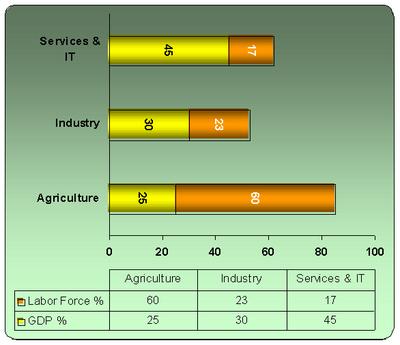Following is an extract from the Indian President Kalam’s Republic Day speech echoing the same concerns I raised in the blog India in the year 2020.
Changing Pattern of Society
When the world was moving from the industrial to the information and knowledge era, we witnessed a changing pattern in the sectoral share of Gross Domestic Product and the number of people employed in each sector. The share of GDP percentage has undergone a considerable change. Contribution of agriculture to
National Employment Status
The National Rural Employment Guarantee Bill 2004 was tabled in Parliament in its last session to create employment opportunities in the rural sector. What is needed is coordinated planning and linking of the spirit of this Bill to productive and sustainable employment generation schemes for the unemployed youth. Now I would like to discuss the national employment scenario.
As per the estimates of the Planning Commission, the total number of people eligible for employment at present is approximately 400 million. Out of this, nine percent are unemployed which works out to around 36 million. In addition, there is a need to find value added employment for 10 percent of those employed in the agriculture sector in rural areas. Our attempt hence should be to find gainful employment for around 76 million people. This will add to our productivity and will ensure a sustained 10 percent GDP growth for the decade, which is an essential need for
Dear Citizens, a nation of a billion people that is capable of exporting foodgrains, a nation that is recognised for its software products and services, a nation that can build its own aerospace systems and nuclear power plants, a nation that is leading in the pharma and automobile industries, I am sure, will be able to put all its think tanks together and come up with many innovative wealth generating schemes for the productive employment of 76 million people.



